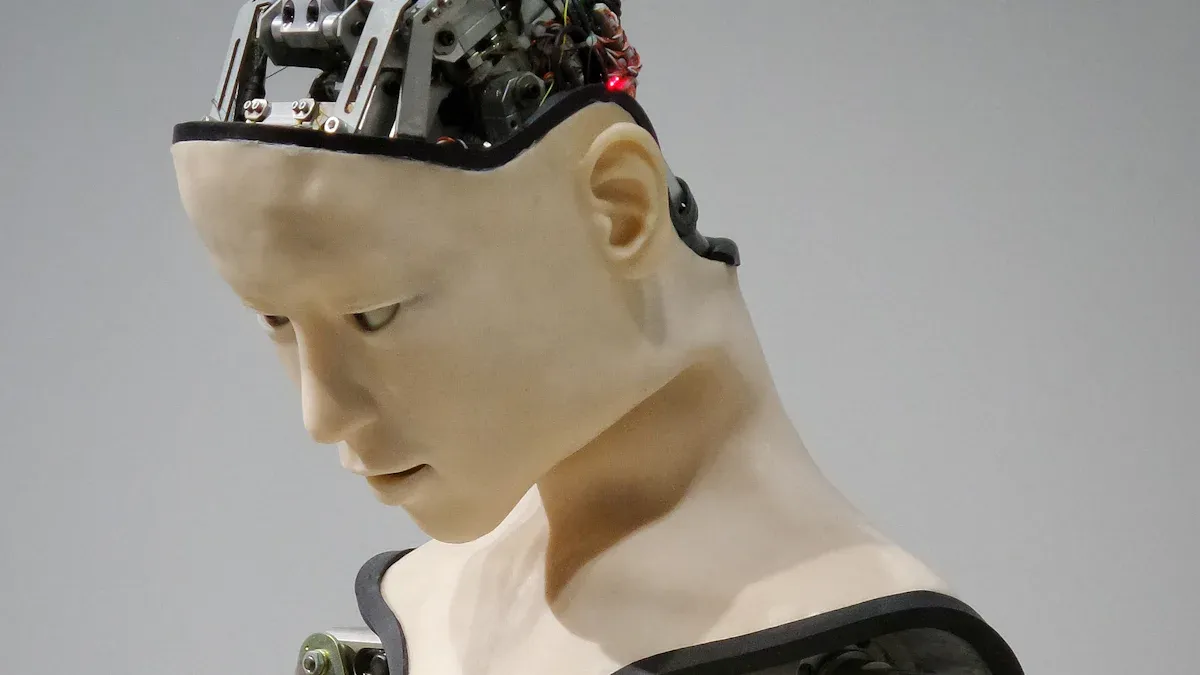Challenges of Cross-Border Hiring Automation in 2025

Cross-border hiring automation in 2025 faces significant hurdles that demand your attention. Complex labor laws and shifting regulations create a maze that automation alone cannot navigate. For example, countries frequently adjust tax rates and employment protections, which automated systems can flag but cannot interpret for your business strategy. Relocating talent also involves more than routine tasks. Employees need real-time guidance for work permits and residency rules, which automation struggles to provide. Additionally, crises like the COVID-19 pandemic revealed the limits of automation in adapting to unforeseen challenges. Addressing these issues ensures smoother global employment processes and reduces costly errors.
Key Takeaways
Hiring across countries is easier with automation but faces challenges.
Legal rules and cultural differences make it hard without human help.
People are needed to follow labor laws and hire correctly.
Mixing automation with people helps in tricky areas like culture fit.
Clear AI systems build trust, which is key for hiring success.
Learning and changing are important to stay ahead in hiring globally.
Overview of Cross-Border Hiring Automation
Defining Cross-Border Hiring Automation
Cross-border hiring automation refers to the use of technology to streamline the recruitment and management of employees across different countries. It involves automating tasks like candidate sourcing, screening, payroll processing, and compliance monitoring. By leveraging advanced tools such as artificial intelligence (AI) and machine learning, companies aim to reduce manual effort and improve efficiency in global employment processes. However, automation alone cannot address every aspect of hiring, especially when dealing with complex legal and cultural differences.
Benefits and Challenges in Global Employment
Automation offers several benefits in global employment. It simplifies routine tasks like initial candidate screening and interview scheduling, saving time and resources. AI tools analyze large datasets to identify top candidates based on qualifications and experience, promoting diversity by reducing hiring bias. Additionally, automation enhances efficiency in managing payroll and compliance across borders.
Despite these advantages, challenges persist. Labor laws frequently change, and automated systems cannot interpret how these shifts impact your business strategy. For instance, the French labor code often undergoes revisions to protect worker rights. While software can flag these changes, only human expertise can adapt contracts or practices accordingly. Similarly, automation struggles with complex visa applications and tailoring contracts to local legal requirements. These areas demand human foresight and adaptability to mitigate risks.
The Role of Automation in 2025
In 2025, automation continues to play a significant role in cross-border hiring. Key contributions include:
Streamlining candidate sourcing, screening, and initial interviews.
Using AI to analyze data and identify top talent efficiently.
Reducing hiring bias by focusing on objective qualifications.
Supporting remote work by enabling global talent acquisition.
However, automation remains limited in managing local labor law complexities and sudden tax law changes. Companies must combine automation with local expertise to address these gaps effectively.
Challenges in Cross-Border Hiring Automation

Legal and Regulatory Limitations
Compliance with International Labor Laws
Navigating international labor laws presents one of the most significant challenges in cross-border hiring automation. Labor laws frequently change, and each country has unique regulations. Automated systems can detect these changes but cannot interpret their implications for your business. For example, a system might flag updates to worker protections in Germany, but only local expertise can adjust contracts to ensure compliance. The complexity of global employment laws often requires human oversight to avoid costly mistakes.
Taxation and Payroll Challenges
Taxation and payroll processes in cross-border hiring are highly intricate. Each country has its own tax rules, which affect how much tax is withheld from employee paychecks. Double taxation is another issue, where employees may face taxes in both their home country and the country of employment. While tax treaties, such as the US-Canada agreement, aim to prevent this, they are complex and require careful interpretation. Automated systems can calculate payroll but struggle with these nuanced scenarios, making human intervention essential for accuracy.
Visa and Immigration Complexities
Visa and immigration processes add another layer of difficulty. Relocating talent involves more than filling out forms. Employees often need personalized guidance to navigate work permits and residency requirements. Automation can streamline document collection but cannot address unique cases or sudden policy changes. For instance, during global crises, governments may alter visa rules, leaving automated systems unable to adapt quickly.
Cultural and Language Barriers
Managing Multilingual Communication
Effective communication is vital in global employment, but language differences can create barriers. Automated translation tools help bridge gaps but often fail to capture cultural nuances or industry-specific terminology. Miscommunication can lead to misunderstandings during the hiring process, affecting both employers and candidates.
Adapting to Regional Work Cultures
Workplace cultures vary widely across regions. For example, employees in Japan may value hierarchical structures, while those in Sweden prefer flat organizational models. Automation cannot adapt to these cultural differences, which can lead to friction in team dynamics. Understanding and respecting these variations require human insight.
Technological Limitations of Automation
Data Privacy and Security Risks
Automation relies on large amounts of data, making privacy and security critical concerns. Cross-border hiring involves sharing sensitive information, such as employee identification and financial details. Cybersecurity threats and varying data protection laws, like GDPR in Europe, pose significant risks. Ensuring compliance with these regulations requires robust security measures.
Lack of Standardized Processes
The absence of standardized global hiring processes complicates automation. Each country has unique requirements for contracts, benefits, and compliance. Automated systems struggle to accommodate these differences, leading to inefficiencies. Standardization efforts could help, but they remain a long-term goal.
Insufficient AI Training for Diverse Scenarios
AI systems often lack training for diverse hiring scenarios. For instance, they may not account for regional employment challenges or cultural sensitivities. This skills gap limits the effectiveness of automation in global employment, requiring human expertise to fill the gaps.
Limitations of Automation in Global Employment
The Need for Human Oversight
Addressing Bias in Automated Systems
Automation in hiring often struggles with bias. Algorithms learn from historical data, which may contain biases against certain groups. Without human oversight, these biases can persist or even worsen. You play a critical role in identifying and correcting these issues. For example, you can review AI-generated decisions to ensure fairness and inclusivity. This process helps align hiring practices with ethical standards and organizational values.
Human oversight also provides context that automation lacks. While AI might flag a candidate as unsuitable based on keywords, you can assess their broader qualifications. This balance between technology and human judgment ensures a more equitable hiring process.
Handling Complex Decision-Making
Automation excels at repetitive tasks but falters in complex scenarios. For instance, deciding between two equally qualified candidates often requires evaluating intangible factors like cultural fit or leadership potential. These decisions demand empathy and nuanced understanding, which only you can provide.
You also manage change and adapt to new technologies. When automation introduces new tools, your role involves monitoring their performance and identifying areas for improvement. This oversight ensures that automation complements, rather than replaces, human expertise in global employment.
Challenges in AI Explainability
Transparency in Automated Processes
AI systems often operate as "black boxes," making their decision-making processes difficult to understand. This lack of transparency poses significant challenges. You need to know why an AI system rejected a candidate or flagged a compliance issue. Without this clarity, trust in automation diminishes.
To address this, you should advocate for transparent AI systems. These systems explain their decisions in simple terms, enabling you to verify their accuracy. Transparency not only builds trust but also ensures accountability in automated hiring processes.
Building Trust in AI-Driven Hiring
Trust is essential for the success of AI in hiring. Candidates and employees may feel uneasy about decisions made by machines. You can bridge this gap by combining automation with human interaction. For example, you might use AI to shortlist candidates but conduct interviews yourself. This approach reassures candidates that their unique qualities are valued.
By balancing AI-driven efficiency with human empathy, you foster a hiring process that is both effective and trustworthy. This collaboration between humans and machines addresses the limitations of automation while enhancing global employment practices.
Strategies to Address Challenges
Hybrid Models of Automation and Human Expertise
Balancing Automation with Human Input
You can achieve better results by combining automation with human expertise. Automation excels at repetitive tasks like screening resumes or scheduling interviews. However, human input is essential for nuanced decisions, such as assessing cultural fit or leadership potential. For example, while AI might shortlist candidates based on qualifications, you can conduct interviews to evaluate their interpersonal skills. This hybrid approach ensures that automation handles routine tasks, freeing you to focus on strategic aspects of global employment.
Identifying Tasks for Automation
Not every task in cross-border hiring should be automated. You should identify repetitive and time-consuming processes that benefit most from automation. For instance, payroll calculations and compliance monitoring are ideal candidates for automation due to their rule-based nature. On the other hand, tasks requiring empathy, such as resolving employee concerns, are better suited for human oversight. By carefully selecting tasks for automation, you can maximize efficiency while maintaining a human touch.
Enhancing AI Explainability
Developing Transparent AI Systems
Transparency in AI systems builds trust and accountability. Many traditional AI models lack clarity in their decision-making processes, which can lead to skepticism. Tools like IBM’s AI Explainability 360 and Google’s What-If Tool provide insights into how AI systems make decisions. These tools allow you to understand why a candidate was rejected or flagged, ensuring fairness in hiring. By adopting such tools, you can enhance the transparency of your automated systems and foster trust among employees and candidates.
Educating Teams on AI Usage
Educating your team on AI usage offers multiple benefits. It helps them understand how to leverage AI tools effectively, expanding your talent pool and improving productivity. For example, global teams can work across time zones, enabling continuous workflows. Additionally, training fosters cultural sensitivity and inclusivity, which are critical in global employment. By investing in education, you empower your team to use AI responsibly and efficiently.
Promoting International Collaboration
Aligning Global Standards
Aligning global standards simplifies cross-border hiring. You can collaborate with educational institutions to co-develop curricula that prepare graduates for global employment. Apprenticeships and internships also create recruitment pipelines, ensuring a steady flow of job-ready talent. These efforts align industry needs with educational outcomes, reducing skill gaps and improving hiring efficiency.
Partnering with Local Experts
Local experts play a crucial role in navigating regional complexities. For example, SAPRO partnered with Playroll to address payroll and compliance challenges during their expansion into Canada. This collaboration ensured smooth onboarding and compliance with local regulations. Similarly, you can work with local professionals to adapt to regional laws and cultural norms, minimizing risks and enhancing the benefits and challenges of global employment.
Preparing for the Future of Cross-Border Hiring Automation

Embracing Continuous Learning and Adaptation
You need to foster a culture of continuous learning to stay ahead in cross-border hiring automation. Automation evolves rapidly, and your team must adapt to these changes. By encouraging ongoing education, you ensure that employees remain skilled and confident in using new tools.
A workplace that values learning becomes more resilient to technological shifts.
To achieve this, you can:
Offer training programs focused on emerging technologies.
Encourage employees to attend industry webinars and conferences.
Provide access to online courses that enhance technical and cultural knowledge.
These steps help your team embrace innovation while maintaining a human-centered approach to hiring.
Monitoring Emerging Technologies
Staying informed about new technologies is essential for future-proofing your hiring processes. Tools like AI-driven analytics, blockchain for secure data management, and advanced chatbots are transforming global employment. You should monitor these advancements to identify opportunities for improvement.
For example, blockchain can simplify cross-border payroll by ensuring secure and transparent transactions. AI-powered tools can enhance candidate screening by analyzing data more effectively. By integrating these technologies, you can streamline operations and reduce errors.
Tip: Subscribe to industry newsletters and follow tech leaders to stay updated on trends.
Regularly reviewing your technology stack ensures that your systems remain competitive and compliant with global standards.
Building Scalable and Resilient Hiring Systems
Scalability and resilience are critical for handling the complexities of cross-border hiring. Your systems must accommodate growth while adapting to unexpected challenges.
To build scalable systems, focus on:
Implementing cloud-based solutions for flexibility.
Designing workflows that can handle increased hiring volumes.
Partnering with vendors who offer customizable tools.
Resilience requires robust cybersecurity measures and contingency plans. Protecting sensitive employee data should be a top priority. By investing in scalable and secure systems, you prepare your organization for long-term success in global hiring.
Cross-border hiring automation in 2025 presents challenges like legal complexities, cultural barriers, and technological limitations. You can overcome these hurdles by adopting hybrid models that combine automation with human expertise. International collaboration also plays a key role in aligning global standards and fostering innovation.
To adapt to the future of global employment, focus on forward-looking strategies:
Facilitate knowledge-sharing through cross-functional collaboration.
Promote continuous learning with internal platforms.
Develop training programs for technical skills and resilience.
Embrace technology to drive workplace adaptation.
By preparing today, you can build a hiring system that thrives in tomorrow’s global landscape.
FAQ
What is the impact of automation on the global job market?
Automation significantly changes the global job market. It creates new opportunities while displacing traditional roles. You may notice jobs threatened by automation in industries like manufacturing and customer service. However, it also drives demand for tech-savvy professionals, reshaping career paths worldwide.
How does automation lead to job displacement?
Automation replaces repetitive tasks with machines or software. This leads to job displacement in roles requiring minimal skills. For example, automated checkout systems reduce cashier positions. You can adapt by learning new skills that align with emerging technologies.
Can automation cause rising unemployment?
Automation can contribute to rising unemployment if workers fail to adapt. Jobs requiring routine tasks face higher risks. However, you can mitigate this by upskilling and exploring fields less impacted by automation, such as creative or strategic roles.
How does automation affect job security and career prospects?
Automation impacts job security and career prospects by shifting demand toward specialized skills. You may need to focus on continuous learning to stay relevant. While some jobs face displacement, others emerge, offering new opportunities in the evolving job market.
What strategies can help mitigate job losses due to automation?
You can mitigate job losses by embracing lifelong learning and acquiring in-demand skills. Governments and organizations can also support workers through reskilling programs. Collaboration between industries ensures smoother transitions and reduces the impact of automation on employment.
See Also
Overcoming Major Challenges in Recruitment Automation Effectively
How AI Recruitment Tools Are Shaping Today's Hiring Methods
Enhance Your Hiring Strategy with ATS for Better Efficiency
AI-Powered Online Recruitment Systems Transform Talent Acquisition
Addressing Language Challenges in Recruitment with ATS Solutions
From recruiting candidates to onboarding new team members, MokaHR gives your company everything you need to be great at hiring.
Subscribe for more information

